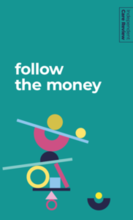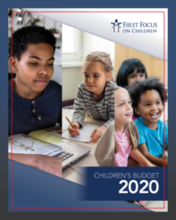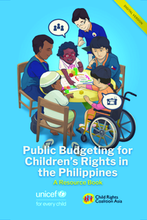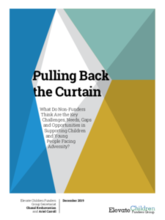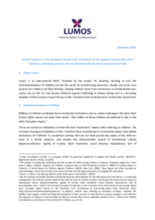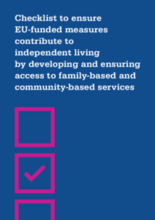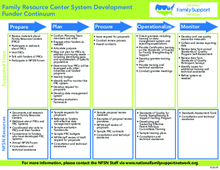Displaying 61 - 70 of 189
This paper was written by Dr Katherine Trebeck and is her reflections on what was found as a result of the work done to Follow the Money, the report of the Independent Care Review that produced the financial argument needed to challenge the way Scotland invests in its ‘care system’.
One of several reports produced as part of the Scottish Independent Care Review, this report explains how Scotland can invest better in its children and families.
This report from First Focus on Children presents analysis of the U.S. spending on children and children's services, including child welfare, in 2020.
This brief from Head Start provides an overview of state funding for Head Start, a collection of comprehensive birth to five programs in the U.S. specifically designed to strengthen families, promote school readiness, and improve child health.
This resource book simplifies and unpacks budget processes with key guidance on specific policies and steps for those who seek to be champions for child-centered public finance in the Philippines context.
This report is an analysis of the feedback that the Elevate Children Funders Group (ECFG) received from a six-question survey with over 70 non-funder stakeholders.
This brief from Lumos reviews the the transition from institutional to family and community-based care under the European Social Fund (ESF) funding period 2014-2018, including promising deinstitutionalisation practices, and outlines key recommendations to the European Union for the completion and implementation of the ESF+ 2021- 2027 funding period.
The purpose of this study was to estimate the costs of hospitalization for physical and mental health conditions by child protection status, including out-of-home-care (OOHC) placement, from birth until 13-years, and to assess the excess costs associated with child protection contact over this period.
The purpose of this checklist from the European Expert Group on the transition from institutional to community-based care, with Hope and Homes for Children, is to ensure EU funds in the 2021-2027 programming period contribute to independent living and inclusion in the community, including by supporting desk officers to check the consistency of the measures to transition from institutional to family-based and community-based services for children and the prevention of institutionalisation and separation of children, including with disabilities, from their families.
This guide from the National Family Support Network provides a brief outline of suggested steps for funders to invest in Family Resource Centers, including resources from the National Family Support Network for each step.


